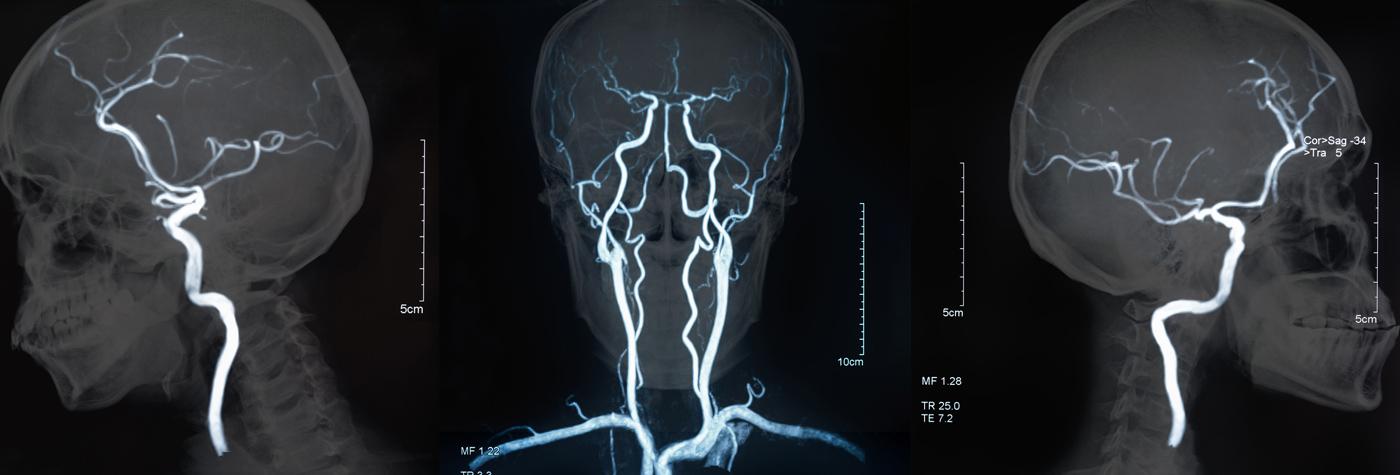What if we could reverse the effects of stroke?
Dr. Justin Fraser, surgical director of UK HealthCare’s Comprehensive Stroke Center, is working to do just that.
“My goal is, any patient who has a stroke is brought in, and we’re able to reverse it,” said Fraser. “That’s the ultimate goal. And we have a number of different avenues to do that.”
Dr. Fraser teamed up with UK HealthCare’s Center for Advanced Translational Stroke Science, to find ways to reverse the damage caused by stroke. Alongside other UK researchers, they’re working to develop trials of treatments, including the MAVARIC trial and the BACTRAC study, that would not only help limit stroke damage but also potentially restore brain function after a stroke.
MAVARIC: A neuroprotective ‘cocktail’
In the MAVARIC trial, Fraser is investigating the neuroprotective benefits of combining magnesium with Verapamil. Magnesium has previously been studied for its potential to protect the brain after a stroke, but this trial is the first to intra-arterially deliver a neuroprotective “cocktail” to the stroke site.
After the clot is removed through the catheter, there’s immediate access to the site in the brain where the injury is occurring. UK takes existing therapeutics that already exist and puts them into the catheter immediately after removing the clot, so that the drug is delivered directly to the stroke-affected area of the brain.
What they’re seeing is encouraging. Early trials have given astounding results that indicate a noticeable reparative effect by delivering Verapamil to the site of a stroke.
Fraser added: “We’re only getting started. The reality is, we’ll probably end up with a ‘cocktail’ of drugs that will be even more reparative. That’s where the whole idea of ‘reversing a stroke’ comes from. We’re only scratching the surface on what’s possible.”
BACTRAC: Learning from stroke tissue
In addition to the MAVARIC trial, UK is also collaborating on the development of a stroke tissue bank to enhance stroke research. The BACTRAC (Blood and Clot Thrombectomy Registry and Collaboration) study is developing a tissue bank of thrombi (stroke-causing clots) and distal and peripheral blood to examine the immediate molecular changes that occur at the stroke site.
The samples are obtained through standard thrombectomy. The process relies on a highly collaborative process of tissue collection and informed consent that will enable inclusion of nearly every thrombectomy case at UK.
The team is already noticing surprising changes in the blood and tissue where strokes occur. These observations could eventually allow for more targeted treatment of strokes.
Few places in the U.S. have this translational integration for stroke between basic research and clinical research. As an academic medical center we are at the leading edge of developing new therapies.
Kentucky is considered the “buckle” of the stroke belt, where stroke incidence is among the highest in the country, but UK HealthCare is dedicated to changing that.
“Dr. Fraser and I are one of a handful, if that, in the country who are doing this kind of work,” said Bix. “You have an academic research institution like this dreaming up new treatments that have the potential to push stroke care forward; that’s unique in this region.”

